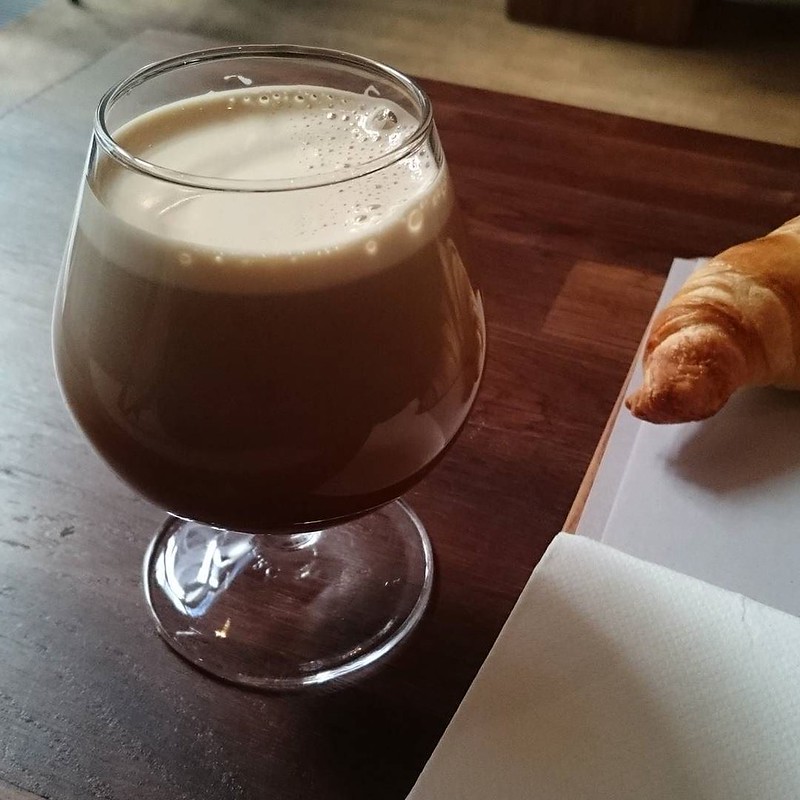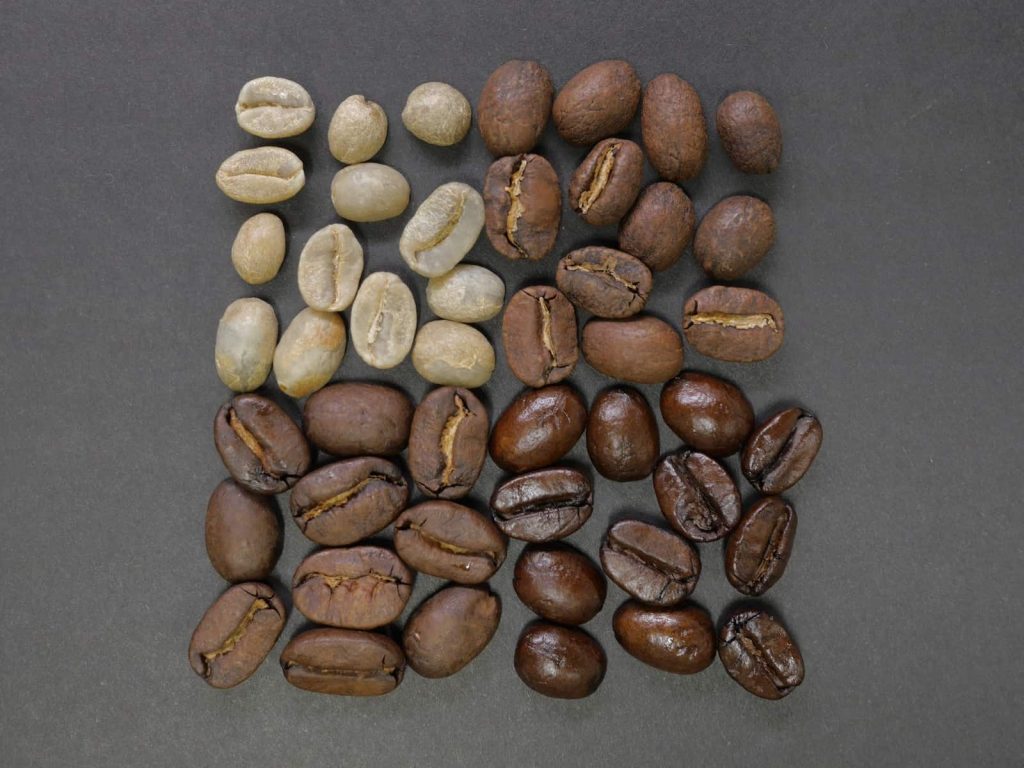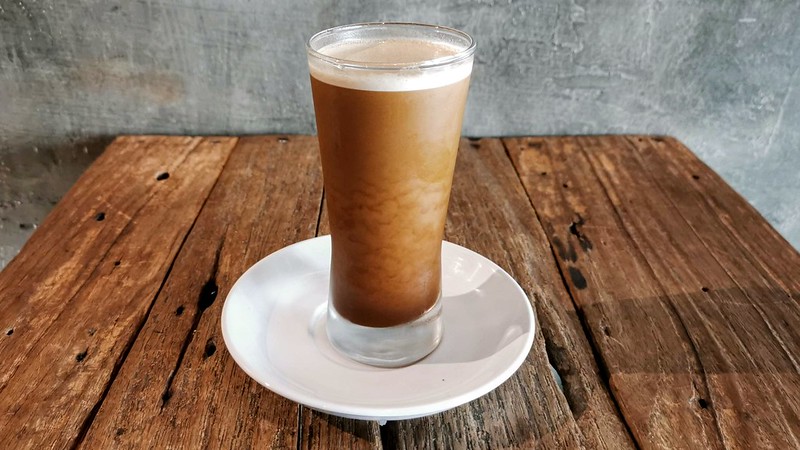What Is Nitro Coffee And How Do You Make It?

Until very recently, we didn’t think of coffee as a carbonated beverage. It is a brewed one, without bubbles and such. Like tea or chamomile, it is a nice but still drink.
Until recently. You may have noticed the ready to drink cans at your nearest grocery store. Some are just pre-made coffee, with or without milk, that comes cold in a can, easy to open and drink anywhere. Yet others have added gas, making coffee a champagne-like drink.
Another one is nitro coffee. You may have seen it at your local cafe, and if you haven’t you will soon. Or heard about it. Nitro coffee is the latest trend in the coffee world, a carbonated beverage born out of the union of nitrogen gas and coffee.
What is nitro coffee?
Coffee is not like wine. It is not put into barrels to age or ferment, and doesn’t then have bubbles of its own. Those need to be added later. And in the case of nitro coffee, nitrogen gas is injected into the pre-brewed coffee to make it bubbly. Nitrogen has been chosen among all gasses because it is safe for human consumption and is both odourless and tasteless.
It will not change the taste of the coffee but change its texture only, making it feel like a sparkling water instead of a still one.
Nitrogen has been long used in beers to add more bubbles. Its introduction to coffee has been much more recent, dating back to 2012. And to be precise, nitrogen-based beverages should be called “nitrogenated” instead of “carbonated”. A mere matter of wording as the end result for the consumer is virtually the same.
The only fundamental difference is that nitrogen tends to create smaller bubbles that don’t dissolve themselves easily in the liquid. The mouthfeel is thus different from the one with carbonated or tonic water, for example.
Nitro coffee is made sometimes with hot brewed coffee, left to cool down to room temperature, or more commonly with cold brewed coffee, refrigerated for a few hours in the fridge. The difference is a matter of taste, as hot brewed coffee differs quite a lot from a cold brewed one.
It is easiest and more widespread to add nitrogen to a cold brewed coffee though, making what should be technically called “nitro cold brew coffee”. Probably that’s what you have been served at Starbucks or elsewhere, as it is far more widespread to drink nitro coffee cold in the hottest months of the year.
How does it taste?
If you haven’t tried nitro coffee yet, you may rightfully be thinking now about its taste. Nitrogen we said doesn’t change the taste at all, only the texture of the beverage. Therefore, nitro coffee’s taste depends on the taste profile of the coffee with which it is made.

Nitro coffee with a cold brewed coffee, as it is most commonly made, has the characteristics of a cold brew, thus low acidity, virtually no bitterness, sweet (if present in the coffee beans), and a quite clear drink.
Over these basic characteristics, the nitrogen gas donates an extremely smooth texture thanks to the micro-bubbles. Nitro coffee has more body, is “thicker” in the mouth, in the same way that a glass of sparkling water feels compared to still water.
Like beer or champagne, nitro coffee is usually drunk straight, with no sweetener. At most over some ice cubes. The natural creaminess of nitro coffee is more than sufficient for most coffee drinkers to enjoy it without any other ingredient. Otherwise, nobody prevents you from adding milk or syrups, donating to nitro coffee all sorts of flavors that aren’t present in the original coffee.
Texture
The texture of the nitro coffee is what makes it stand out in the world of coffee drinks. If you know what a Guinness beer tastes like, you will know this texture. A satiny thickness given by the nitrogen bubbles, making a frothy, milky layer that tends to sink from top to bottom of the glass.
As with the Guinness beer, this moving gradation is called a “cascade” as it looks like the bubbles are moving like a waterfall, but in a slightly circular motion.
A glass of nitro coffee looks nearly identical to a glass of Guinness beer. Only nitro coffee is often of a lighter color, depending on the roasting level of the coffee beans used and whether any milk has been added or not.
Acidity Level
Nitro coffee, as it is commonly done with a cold brew, has an interesting advantage. Coffee drinkers suffering from acid reflux or struggling to digest coffee in general will be happy to know that nitro coffee has a lower acidity than most other types of coffee drinks, leading to much higher digestibility.
The reason is not in the nitrogen, even if some gas may help the digestion, but in the type of brewing used to make the nitro coffee. A cold brewed coffee extracts a range of elements from the beans different from the ones that a hot brewed coffee does. This has to do with the water temperature: hot water gets more bitterness and acidity than cold water.
Therefore, a nitro coffee made with a cold brew is less bitter and acidic than a hot brewed coffee. Bitterness mostly depends on the type of beans so if using very darkly roasted ones it may end up making a bitter cold brew anyway but acidity should remain on the low side, anyway.
These low levels of bitterness and acidity make nitro coffee a smooth and easy to enjoy coffee drink, which stands out among the world of hot-brewed coffee variations.
Caffeine Amount
Here things get tricky. Does a nitro cold brew coffee contain less or more caffeine than a regular, non-nitro, coffee?
Generally speaking, a coffee brewed with cold water will contain less caffeine than one brewed hot. That is because hot water is capable of extracting caffeine more easily than cold water. It may then be a logical assumption that a nitro cold brew coffee will have less caffeine. And it may well be true in most cases.
Yet it depends. First, from the beans themselves. If a cold brew is made with beans that are high in caffeine the result may very well have the same amount of caffeine than a regular hot cup of coffee, and perhaps even more.

Given the same beans though, a cold brew may still have a higher caffeine content than a hot brew because of the water to coffee ratio. In a hot brew usually the quantity of water used to make coffee is much above the amount of coffee grounds used. In the larger sizes it is even more.
The ratio is very far from the levels of coffee to water ratio that is implemented in a cold brew. It is not unheard of to use 2 or 3 times more coffee compared to water in a cold brew.
That amount of coffee means that more caffeine is available to be extracted in a cold brew than in a hot brew. It is thus possible to have a cold brew, and therefore also a nitro coffee, that has a much higher caffeine content than a comparatively sized cup of regular coffee.
So yes, it depends. Often a hot brewed coffee wil have more caffeine but it is not a rule that has no exceptions.
Health Benefits
Nitro coffee doesn’t differentiate much from regular coffee to have a whole new array of health benefits. You may expect the same effects as any other coffee, namely:
* Decreased depression
* Reduced diabetes risk
* Lower risk of death
* Protection against dementia, Alzheimer’s and Parkinson’s diseases
* Help in weight loss
A particular advantage of nitro coffee may be that it will allow you to drink unsweetened coffee. Due to the effects of the nitrogen bubbles, the taste of nitro coffee is slightly sweeter, and you may be able to drink it straight, with nothing added to it. Black coffee has a lot fewer calories than coffee with milk or sugar, which is a significant benefit for dieting and health in general.
You may assume nitro coffee to be the same regarding your health as hot brewed coffee, and act accordingly.
Can you make it at home?
Nitro coffee sold at cafes is regularly based on cold brew, making it an expensive drink. Cold brew requires more coffee compared to water than hot brewed coffee, and long extraction times, increasing its costs. Nitro coffee adds the nitrogen, further increasing the investment necessary to serve you one.
Therefore, making nitro coffee at home seems like a reasonable idea. But how hard is it?
Not that much. The chief difficulty is in purchasing and using a whipped cream dispenser that is charged with a nitrogen capsule. Many exist in commerce, and some companies have started selling nitro coffee makers as well, that are specific to use nitrogen only. Neither is particularly expensive but if you drink a lot of nitro coffee, the nitrogen charges’ costs add up quickly.

Once you have a way to inject nitrogen into your coffee, it remains only to make a good cold brew, not concentrate, and fill a large glass with it. Sweeten it if you like, and/or add milk before using the nitrogen capsule to make your nitro coffee.
Conclusion
Cold brewed nitro coffee is not just a fad but a solid coffee drink that has plenty of character and an original texture, unlike any other coffee you can make. It is less acidic, somewhat more sweet and has comparatively less bitterness than a hot brewed coffee. The bubbles add to it a whole new dimension, not just like frothed milk can usually do, but more like a champagne or beer.
But it is still coffee, and should be easily appreciated by any coffee aficionado. The texture of a nitro coffee is a perfect way to enjoy your favorite black beverage on a hot summer day!